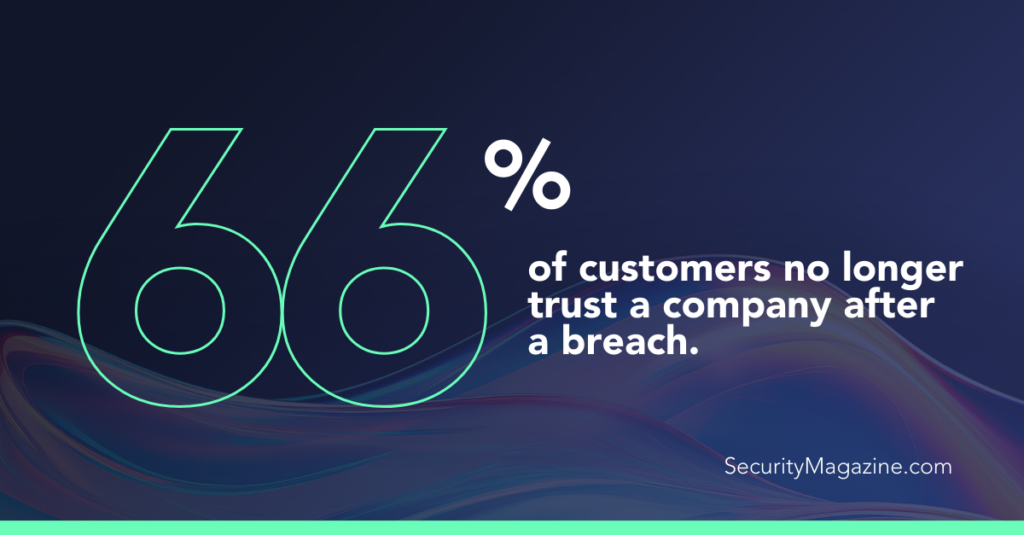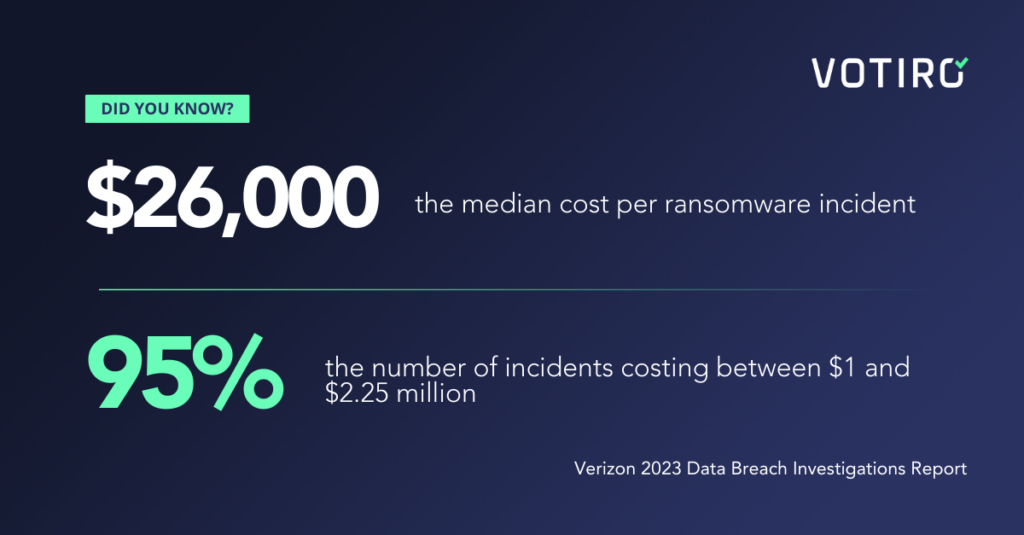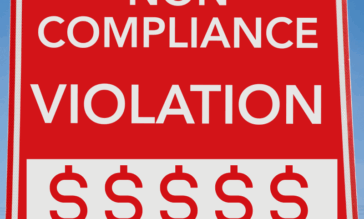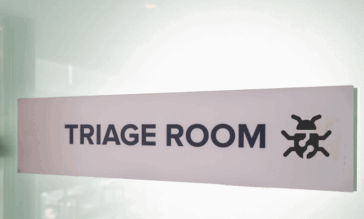The Cost of Data Privacy in 2024

Data privacy should be a top priority for businesses, no matter the industry. Some might assume that privacy regulations such as GDPR, with its high monetary penalties, are the reason. Yet, cost is only part of the equation. Not only does data privacy directly affect the very customers who keep the business alive, it’s what differentiates your business.
The Customer Cost
For a business’s customers, a breach of their sensitive data can be disastrous, leading to identity theft, financial fraud, and personal safety concerns. In 2024, it’s hard to make it through an entire news cycle without hearing about customer outrage as a result of a data breach. In fact, failures to protect this data undermine the trust customers place in a business, with 66% of customers no longer trusting a company after a breach. This reputational damage affects future business deals and may even chase off existing customers.

The Business Cost
From a business perspective, the implications are equally, if not more, severe. Sensitive business data, including trade secrets, strategic plans, internal correspondence, and customer databases, represent the lifeblood of a company’s competitive advantage. A breach compromising such data can lead to significant financial losses, erode customer trust, and damage a company’s reputation, sometimes irreparably. The loss of trade secrets or proprietary information can result in losing market position to competitors, now and into the future.
In this article, we explore the current state of data privacy to see how organizations have fared over the last year and investigate actionable steps that you can take to improve privacy efforts.
The Current State of Data Privacy
Data breaches continue to be on the rise despite improvements in security technology. According to research by Apple, there was a 20% increase in data breaches from 2022 to 2023. This increase in breaches reflects how people live most of their lives online, with organizations of all sizes, from governments to corporations, collecting massive amounts of sensitive data in various forms. Everyday actions of paying taxes, buying a sandwich, or paying for a ride all result in data being collected and stored. Which means individuals can no longer avoid turning over their data to live in modern society.
Notable Data Privacy Incidents
When looking at the privacy challenges over the last year, it’s important to note that no organization is safe, no matter how large or impressive its cybersecurity posture is. On average, organizations store 240TB of data, which includes everything from sensitive customer data to important business secrets. Many of the breaches we now see are massive events encompassing large volumes of data.
Some notable examples from 2023 alone include:
- T-Mobile – In November 2023, T-Mobile faced a potential third data breach within a year, involving a claim by cybercriminals of having exposed 90GB of data, including employee credentials, customer information, and other sensitive data.
- MGM – A ransomware attack in September cost them over $110 million, including $10 million in one-time consulting cleanup fees. This attack disrupted operations in Las Vegas, leading to about $100 million in lost revenue. While the breach did not compromise customer bank account or payment card details, attackers stole personal information like names, contact details, gender, birth dates, Social Security, passport, and driver’s license numbers.
- 23andMe – A data breach affected 6.9 million users, exposing personal information such as names, birth years, relationship labels, DNA data, and ancestry reports. The breach initially impacted 14,000 users but extended to others using the DNA Relatives feature.
The Financial Cost of a Breach
The direct financial implications of a breach involving data privacy are significant. According to the Verizon 2023 Data Breach Investigations Report, the median cost per ransomware incident has more than doubled over the past two years to $26,000, with 95% of incidents costing between $1 and $2.25 million. Ransomware attacks not only hold data hostage, but current variants steal sensitive information, sending it back to threat actors to be held hostage under threat of them selling it on the Dark Web.

However, this only considers breaches due to ransomware. IBM’s research of current breaches shows that the average cost of a data breach globally is $4.45 million. This cost covers everything from the price of resolving the technical cause of the breach to the long-term legal and regulatory fines resulting from the data loss.
How to Keep Data Safe
Solutions like Data Detection and Response (DDR) are crucial to preventing data loss. DDR can help organizations identify and prevent potential data leaks, detect insider threats, ensure compliance with regulations like GDPR and HIPAA, provide real-time data security, detect advanced threats, and automate responses to mitigate damage quickly. Given the evolving nature of cyber threats, organizations must continuously adapt their cybersecurity measures to protect sensitive data effectively.
Threat Identification and Prevention
Prevention is one of the most effective ways to protect data privacy. DDR effectively shields sensitive information through data leak prevention by vigilantly monitoring and mitigating private data movement and access, acting as the first barrier against external and internal threats. DDR also specializes in advanced threat detection, identifying and preempting sophisticated cyber threats like zero-day exploits and advanced malware, often overlooked by traditional security measures.
Compliance and Real-time Security Management
One of the main costs of failing to protect data privacy comes from compliance. Regulations like GDPR, CCPA, and HIPAA have enormous repercussions for non-compliance, including fines, legal costs, and reputational damage. DDR helps form a foundation for meeting these regulations by providing real-time data security, including constant monitoring and analysis of data access and usage. This capability allows for an immediate response to any suspicious activities, ensuring that data remains secure and regulatory requirements are consistently met.
Automated Response and Remediation
One of the most crucial parts of ensuring data privacy is rapidly responding to threats. Faster responses reduce the amount of data that can be lost in an incident, reducing the overall impact of an event. However, solutions like DLP, DSPM, and EDR are response-only, meaning they don’t provide remediation and simply alert IT and SOCs to address vulnerabilities after an intrusion has been detected. DDR provides rapid remediation through automated responses to identified threats. It can isolate affected systems or revoke access to stop attacks and reduce the potential damage.
Votiro Data Detection and Response
Staying ahead of emerging threats significantly enhances security posture. That’s why Votiro has integrated Zero Trust Content Security with Data Detection and Response into a single platform. This integration enables organizations to proactively defend against file-based threats while managing real-time privacy and compliance. The platform also delivers insightful data analytics, offering a comprehensive solution to safeguard organizations, their teams, customers, and their reputations from digital threats. This unified approach helps manage cybersecurity risks more effectively.
Votiro’s Zero Trust DDR unites malware neutralization with sensitive data protection, offering a robust security solution for businesses. This approach focuses on early identification and resolution of vulnerabilities, preventing them from exploitation.
To learn more about Votiro’s Data Detection and Response capabilities, sign up for a one-on-one demo of the platform, or try it free for 30 days and see for yourself how Votiro can proactively defend your data’s security and privacy in 2024 and beyond.
News you can use
Stay up-to-date on the latest industry news and get all the insights you need to navigate the cybersecurity world like a pro. It's as easy as using that form to the right. No catch. Just click, fill, subscribe, and sit back as the information comes to you.
Sign-up Here!
Subscribe to our newsletter for real-time insights about the cybersecurity industry.



